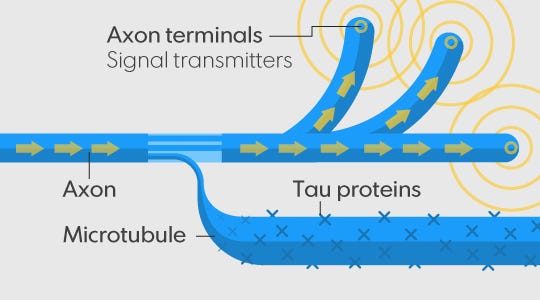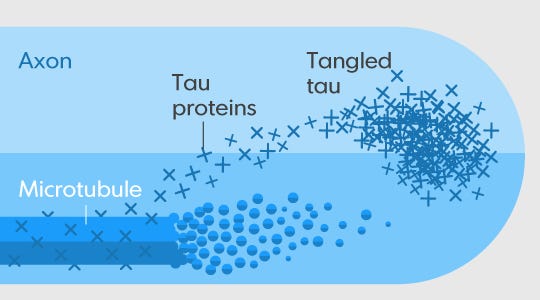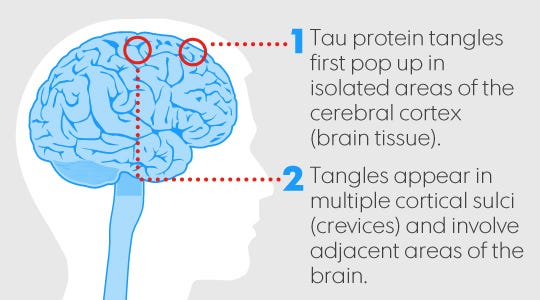What is CTE?
Chronic traumatic encephalopathy (CTE) is a progressive degenerative brain disease found in people with a history of repetitive brain trauma. How brain cells are supposed to work and what can occur with repeated injury:

The brain and spinal cord are made up of billions of cells. Specific brain cells called neurons transmit signals to each other.

Those signals are sent from the neuron cell body via axons, held together by microtubules, to terminals at the end of the axon, where they are broadcast out to other neurons. A protein called tau adds stability to the microtubules and strengthens the axon.

Brain trauma causes tau proteins to detach from the microtubule, destabilizing the structure. The loose tau form tangles that build up and could kill the brain cell.

There are four stages in the development of CTE. Tau protein tangles first accumulate in the isolated crevices of the brain’s cerebral cortex and then involve multiple regions of the cortex.

Signs of mental deterioration are likely to show during Stage 3 of the process in which crucial parts of the brain are affected by tangled tau.

Symptoms of the disease are memory loss, depression, suicidal thoughts, explosive or aggressive behavior and, in some cases, trouble walking or speaking.
Sources: Boston University CTE Center and VA Boston Healthcare System
Credit: Frank Pompa, USA TODAY